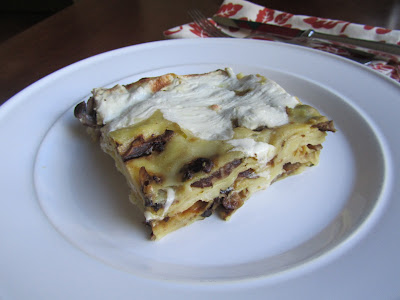Boxed pasta is fine, I use it most of the time and I’m quite
content with my dish… but it ain’t no fresh pasta (I know that’s a double
negative, I’m just being silly). I’m
telling you that once you have fresh pasta, you will long for it. The texture and the flavor just can’t compare
to what you get from a box.
I’m not gonna lie, fresh pasta takes a little time, it’s
gotta be kneaded, rested and rolled; but it’s not difficult to make. I will say however, that having a pasta
rolling machine is pretty important. I
fear that if you ever attempt to roll out your own pasta with a rolling pin; that
you will never, ever want to see another bowl of pasta again.
Having said that, there’s something primitive/therapeutic
about getting my hands into that mound of dough. One could use a food processor to make the
dough, but the texture really isn’t the same as when the dough is kneaded by
hand. Making pasta gives me such a sense
of accomplishment, as well as sense of entitlement. Yes, after all that kneading and rolling of
the dough, I feel entitled to eat a big ol’ bowl of pasta without an ounce of
remorse. You see, carbs don’t count if
you knead the dough yourself…just sayin’.
I made my fresh pasta into fettucini tossed in Easy Tomato Sauce (pictured above).
 |
| I also made Mushroom Lasagne. The recipe for that is my next post! |
 |
| Start by mixing the semolina flour, all-purpose flour and salt together. |
 |
| Make a big ol' mound with the flour, and then make a well in the middle of it. Crack the eggs into the well and add 2 teaspoons of water. |
 |
| Whisk the eggs together with a fork, try not to let the eggs escape from the well. |
 |
| Gradually work more of the flour into the eggs. Notice that I'm working from the inside of the well, keeping those walls intact. |
 |
| Sorry for the blurry picture, but I wanted you to get the idea of what the dough will look like when it's ready to get your hands in it. |
 |
| Now start kneading and working the remaining flour in. |
 |
| When the dough is smooth, wrap it in plastic wrap and allow it to rest for at least 30 minutes. |
 |
| I started our by cutting off too big of a piece of dough; so trust me when I say cut the dough into 6 pieces, it will be waaay easier to work with. |
 |
| Flatten one of the pieces of dough (keep the remaining dough wrapped so that it won't dry out) run it through the pasta rolling machine on the widest setting (#1). |
 |
| So I cut some fettucini. It was enough for the two of us. |
 |
| Which I dried on my improvised drying rack. Now that I have the pasta bug, I am sooo getting an actual pasta drying rack! |
FRESH SEMOLINA PASTA
2 cups Semolina flour
1 cup All-purpose flour
½ tsp. Salt
4 Eggs,
room temperature
2-6 tsp. Water, room temperature
1.
Mix the semolina, all-purpose flour and salt
together in a medium bowl.
2.
Pour the flour out in a mound on a large wooden
cutting board or a smooth surface; but not marble, it’s too cold. Make a well in the middle of the mound of
flour.
3.
Crack the eggs into the well with 2 tsp. of
water and use a fork to whisk the eggs together, being careful to not let the
eggs run out of the mound.
4.
Use the fork and work a little of the flour at a
time from the center.
5.
When the eggs are worked into the flour (the dough will still be wet at this point), start
to knead the dough with your hands.
Knead the dough for about 10 minutes, until it’s a smooth consistency. If the dough has absorbed all the flour and is
too sticky, add a little more flour. Conversely,
if the dough is not absorbing all the flour, add a little more water, one
teaspoon at a time.
6.
Form the kneaded dough into a disk, wrap it in
plastic wrap, and allow the dough to rest for at least 30 minutes.
7.
When the dough has rested cut the dough into 6
pieces. Work with one piece of dough at
a time, and keep the remaining dough wrapped so that it doesn’t dry out.
8.
Flatten out a piece of dough with your hands,
then run it through the widest setting (# 1) on your pasta rolling
machine.
9.
Fold the rolled dough in half and run it through
the same setting again. Repeat this 3
more times with the same piece of dough on the same setting; this makes for smooth
pasta. Lay the sheet of pasta on a
board that has been dusted with semolina flour, or on clean kitchen towel. Repeat with the remaining pasta.
10.
Now take one of the sheets of pasta and run it
through the machine just once, on the next notch (# 2).
Keep putting that sheet of pasta through the machine, reducing the
thickness one notch at a time until the pasta is as thin as you like ( I only
took mine to #6 on my machine, which was quite thin). Repeat with the remaining sheets of pasta.
11.
Allow the pasta sheets to dry slightly, depending
on the humidity 15 to 25 minutes (it should be leathery not brittle) before
cutting into your desired shape.
12.
Fresh pasta can be used the same day, or dried
and stored for months.






No comments:
Post a Comment